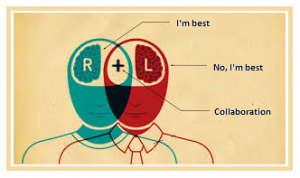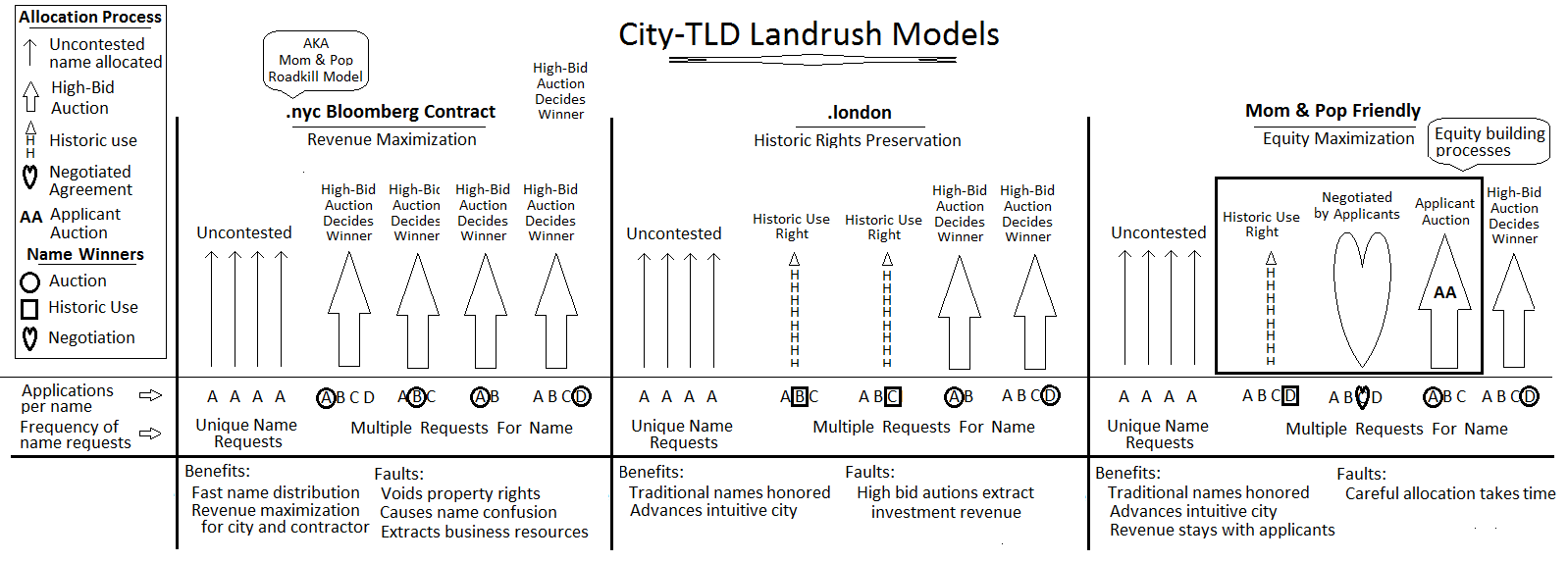 Jackson Hts., New York, August 13, 2014 - New York City is in the midst of a 2 part “Landrush” for allocating .nyc domain names:
Jackson Hts., New York, August 13, 2014 - New York City is in the midst of a 2 part “Landrush” for allocating .nyc domain names:
- First is a 60 day Application Period, August 4 - October 3, during which any city resident can purchase an available .nyc domain name. Most any name is available, exceptions being a group set aside for technical reasons, 482 names taken by holders of international trademarks, and several thousand names reserved by the city administration. It doesn’t even matter if a name has a NYS Trademark or d/b/a registration, those names are fair game too.
- Following this Application Period there’s a high-bid auction which decides who gets a domain name in instances where more than one person submits an application.
There are significant problems with this allocation process.
First, it’s fundamentally unfair. It disregards the proprietary rights of current business owners as expressed by prior use, a New York State Trademark, or a d/b/a. The fact that Rickys Cafe has been using that name for decades and has been issued a NYS Trademark for that name holds no significance during the city’s Landrush period. A revolutionary “property rights be gone” seems to be the attitude. Today, anyone with nexus (8,200,000 of us) can apply for RickysCafe.nyc and have as much right to own it as Ricky.
In preparing for issuing its .london domain names, the city of London developed Priority Period Rules that respect historic property rights. I commented on this recently recommending that New York follow London’s model.
But even with these Priority Period Rules there still needs to be a mechanism for deciding between applicants with the identical priority. Let’s imagine there’s an independently owned Rickys Cafe in every borough and that each submits an application by October 3. Who gets it?
Current Plan
The current plan holds that at the end of Landrush an email will be sent to applicants for domain names receiving only one bid, indicating their application has been approved and they may begin using the name.
In instances where more than one application has been submitted, the plan calls for a closed, private auction for each name. Using RickysCafe.nyc as an example, here’s how that might work.
- The 5 applicants for RickysCafe.nyc will receive an email informing them that others had applied for the name. And that they will need to win a high-bid auction if they hope to use the domain name.
- If they decline to participate in the auction some of their application fees may be refunded - but this depends on the registrar they’ve chosen, some refund partial, some all, or so I’m told. It’s not obvious from ownit.nyc which does what.
- The email will direct the interested Rickys to set up an account with the official auctioneer, and participate in an extended auction.
- In this extended auction, unlike eBay, there’s no bid deadline. Rather, every time someone enters a bid, the auction is extended by 5 minutes. (This auction protocol maximizes revenue with the contractor receiving 60% and the city government 40%.)
- The winning Ricky will be authorized to use the domain name after making good on its high bid.
- The losers weep.
Added to the refusal of the city to respect NYS Trademarks and other indications of prior use, this high bidder auction might be said to add injury to insult.
An Innovative Approach
We think there’s a better way. The idea was sparked when ICANN’s experience with new top level domain names or TLDs. In 2012 it received 1,900 applications for 1,200 different TLDs. The official process for selecting between multiple applicants for the same name - for example there were 8 applicants for .music - was to encourage the applicants to try and resolve the dispute privately. And if no resolution was possible, a high-bid ICANN run auction would decide the winner. The high bidder would get the name with the auction proceeds going to ICANN.
But some smarties came up with a different idea. Instead of holding an auction wherein the proceeds went to ICANN, what about holding a private opt-in auction. And in those instances where all applicants were in agreement, they’d hire their own auctioneer. And instead of the high bid sum going to ICANN, it would be split by the “losing” bidders. So in the case of .music, the winning bidder would pass on that top bid to the auctioneer to be equally shared by the five “losers.” These funds could then be used by the losing bidders for marketing, research, or technology. See ICANNwiki for more on these “Applicant Auctions.”
An Improved .nyc Landrush
How might we adapt the Applicant Auction to the unique needs of the .nyc TLD? Indications from the first month of Landrush registrations are that 6% of the applications will have multiple bidders - 4,300 applications were received with 340 of them duplicates. If the city receives the same number of Landrush applications as London - roughly 50,000 - that might require 4,000 auctions if the Current Plan is followed. [The numbers were updated on September 13 to reflect the latest .london and .nyc experiences.]
But what if we opened up the process. Instead of the planned closed, private auction with bidders ignorant as to whom they were bidding against, we open up the process and put the bidders in touch with one another, as with the ICANN Applicant Auction. And perhaps we could tweak on that process by letting the public comment on the applications: “Which application for RickysCafe.nyc do you think should be approved?” Or we might invite public comments, or even enable investors to join with the bidders.
There will still need to be auctions. But in those instances where the multiple bidders all opt-in to a collaborative end (by auction or otherwise), more money will stay in the hands of applicants to improve their businesses. And because the top bidder will in essence be subsidizing its competitors, it will be inclined to moderate its bid. To everyone’s long term benefit. (Commons image courtesy on Jisc.)
ShareAUG


About the Author:
Thomas thinks about technology and its impact on the quality of urban life.